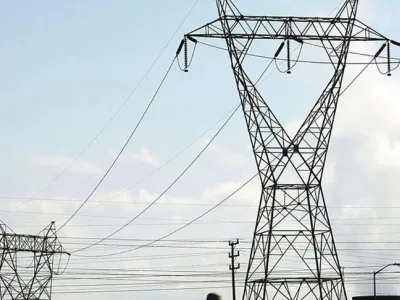Minnesota Power's IRP includes additional renewable energy and storage

Published November 28, 2022
Earlier this month, the Minnesota Public Utilities Commission (PUC) approved Minnesota Power’s plans for the future of its energy system. As required by law, Minnesota Power’s latest Integrated Resource Plan (IRP) provides a roadmap for how the utility will meet its electricity demand over the next 15 years. Throughout the IRP process, Minnesota Power identified which generation resources it planned to use, the expected supply and demand on its energy systems, and the potential financial impacts the plan would have on the utility and its customers. Prior to the hearing, Minnesota Power negotiated an agreement with a group of Clean Energy Organizations (Fresh Energy, Sierra Club, Clean Grid Alliance, and the Minnesota Center for Environmental Advocacy), power plant host communities, labor unions, and others. The PUC’s decision largely adopted this agreement. The PUC’s approval of the IRP represents the culmination of an in-depth planning and evaluation process. An overview of the PUC’s decision is outlined below.
Wind, solar, and energy storage
The PUC approved Minnesota Power’s proposals to add renewable energy and energy storage to its system. Specifically, Minnesota Power must acquire 300-400 megawatts of wind power, with at least 200 megawatts operational by 2026. The Company must also acquire up to 300 megawatts of local solar and implement storage projects of 100-500 megawatt hours. As Minnesota Power acquires these resources, the PUC established an overarching requirement that the company must engage with labor groups, stakeholders, and city officials to maximize socioeconomic benefits for host communities, develop labor opportunities, and ensure an equitable energy transition.
Boswell Energy Center
The Boswell Energy Center is Minnesota Power’s largest coal generation facility, and two generating units remain online at the plant. As part of the transition to cleaner renewable energy, the PUC required Minnesota Power to cease the use of one of the Boswell coal units by 2030 and to completely cease coal operations at the plant by no later than 2035. The PUC also directed Minnesota Power to continue evaluating whether the entire Boswell facility could be retired by 2030. These evaluations will look at a variety of factors, including reliability and capacity considerations, rate implications, impacts on local host communities, and potential alternative uses for the Boswell Energy Center.
Hibbard Renewable Energy Center
Located in Duluth, the Hibbard Renewable Energy Center provides energy generation through a combination of coal and biomass combustion. A report prepared for the Clean Energy Organizations by Physicians, Scientists, and Engineers for Healthy Energy (PSE) found that Hibbard has significant health and energy burden impacts, which disproportionately affect low-income households and BIPOC communities. Although the PUC took no immediate action related to Hibbard, it directed Minnesota Power to conduct an analysis of the facility’s societal costs and benefits in its next IRP.
Nemadji Trail Energy Center (NTEC)
The Nemadji Trail Energy Center, or NTEC, is a planned natural gas power plant that would be operated jointly by Minnesota Power and Wisconsin-based Dairyland Power. Although Minnesota Power had originally planned on maintaining a 50 percent share of NTEC, its parent company, ALLETE, Inc., agreed to sell a portion of its shares and reduce its ownership in the facility to 20 percent. At the same time, gas costs have increased significantly, both in comparison to historical prices and the Company’s own projections. Because of the recent changes to Minnesota Power’s ownership percentage in NTEC, the PUC has required the company to file updated agreements and capacity information as part of its next IRP or sooner. Once that information is filed, the PUC will be able to analyze whether Minnesota Power’s planned use of NTEC is in the public interest and beneficial to ratepayers.
Next resource plan
As part of its next IRP—to be filed on March 1, 2025—the PUC directed Minnesota Power to consult with stakeholders and analyze a variety of issues related to the changing nature of the energy landscape at both the regional and federal levels. As it develops its next resource plan and looks to the future of its energy system, Minnesota Power must analyze the implications of the Inflation Reduction Act on renewable energy projects, assess its efforts to access Infrastructure Investment and Jobs Act (“IIJA”) funding, and identify the impacts of recent transmission developments and regional grid requirements. In addition to these overarching changes, Minnesota Power must discuss any modeling constraints it faces and consider how to better incorporate distributed energy resources into its planning processes. Part of this requirement involves accounting for local clean energy goals as the utility develops future resource plans.
Stakeholder engagement and program evaluations
To facilitate broad discussion and involvement around Minnesota Power’s plans for the future of its energy system, the PUC is requiring the Company to proactively engage with stakeholders, including representatives of historically underrepresented groups, such as low-income customers and BIPOC communities. Stakeholder discussions will address numerous issues, including the societal impacts of the Boswell and Hibbard plants and the steps needed to meet the renewable energy goals set forth in Minnesota law. Apart from stakeholder engagement, the PUC provided some guidance on evaluating new customer programs and services that Minnesota Power might propose. Minnesota Power’s evaluations must address whether the programs will provide energy system benefits; reduce emissions; increase access to energy conservation and electrification; use women, veteran, and minority owned businesses; consider equity through the program design; and are consistent with approved plans and PUC orders.